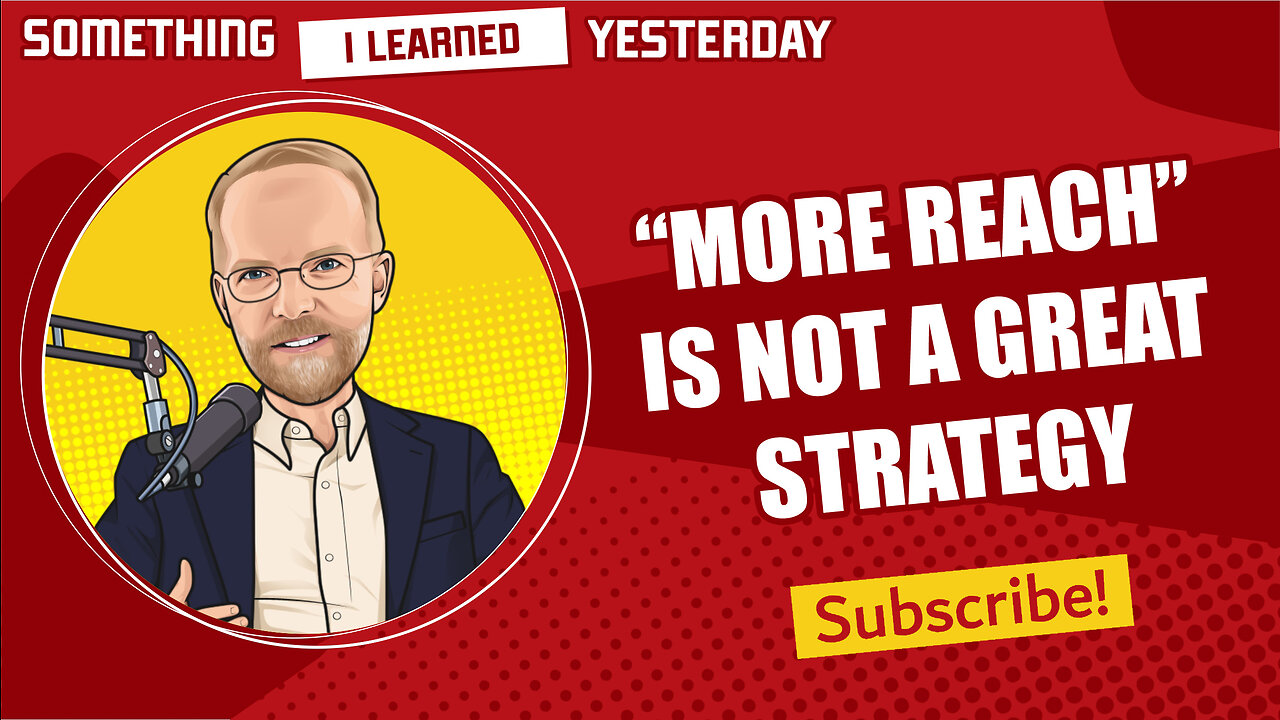Premium Only Content

"Reach" has been a dangerous distraction for publishers
Expanding your market is not always a good idea
Fortune’s Chief Customer Officer, Selma Stern, is cited over at whatsnewinpublishing.com as saying “the media industry is far too focused on reach and forgot about sales. As a result, supervisors set the wrong incentives, leading to many new customers being acquired with dumping prices.”
Misaligned incentives are certainly a big problem. In my experience, many magazine companies incentivize ad sales in a way that undermines subscription sales, which is pretty dumb.
Selma also mentions the very low prices we’ve seen for magazines, which is a somewhat self-defeating way to increase reach.
Here’s how that works. Let’s say you have a magazine about video cameras. To get advertisers to buy pages, they want to know how many people get your magazine. But they also want to know that the people who read the magazine are (1) interested in video cameras, and (2) willing to spend some money in that market.
If you have 50,000 people who are willing to spend $30 a year to get your magazine, that’s a market that will interest advertisers.
Now we get a new marketing director who’s obsessed with reach. Why should we settle for 50,000? Why not 100,000? And to get there, we’ll make ridiculous new subscriber offers, like $5 for one year.
We’ve diluted our pool of subscribers. Before we had people who were willing to spend $30 a year. Now we have people who are willing to spend $5. That group is less valuable to the advertiser. And the more tricks the marketing department pulls to get new people in the door – for example, buy this very popular magazine and get our video camera magazine for just $1 – the more you dilute your subscriber base.
I have very mild interest in video cameras, but I might spend a dollar to get a magazine about them.
There are good things about reach. For one thing, you can get more information about more people, and information is key. I don’t mean that in a sneaky, creepy sort of way, but more information about behavior, preferences, trends, and such, can help with new product development, finding new niches, cross-sales, etc.
But there’s a bad side to reach. A focus on reach can diminish quality. For example, if I’m writing to an audience that really cares about video cameras, the authors can geek out with very detailed, in-the-weeds stuff. But if I’m writing for people who are only mildly interested in video cameras, the stories have to be a lot fluffier, which will frustrate the real enthusiasts – that is, your previous core market.
The same thing is true on a website. If your goal is to attract more eyeballs, you’re going to tend towards lower quality, more sensationalism, and a short-term focus. You’re not going to invest in serious journalism. You’re going to move towards homogenized, generic content.
The future of publishing, I hope, and half-way believe, is in serious, quality content for niche audiences. “Reach” has been a distraction.
-
 42:47
42:47
Kimberly Guilfoyle
9 hours agoThe Trump effect: More Major Investment, Plus America First at Home & Abroad. Live w/Ned Ryun & Brett Tolman | Ep. 201
109K34 -
 1:29:23
1:29:23
Redacted News
8 hours agoWW3 ALERT! Europe pushes for war against Russia as Trump pushes peace and cutting off Zelensky
147K271 -
 57:56
57:56
Candace Show Podcast
11 hours agoHarvey Speaks: The Project Runway Production | Ep 1
143K84 -
 56:31
56:31
LFA TV
1 day agoEurope’s Relationship With America Is Over | TRUMPET DAILY 3.3.25 7PM
39.1K6 -
 2:04:45
2:04:45
Quite Frankly
9 hours ago"European Deth Pact, Blackout Data Breach, Epstein" ft. Jason Bermas 3/3/25
40.2K13 -
 1:32:46
1:32:46
2 MIKES LIVE
6 hours ago2 MIKES LIVE #187 Deep Dive Monday!
22.4K1 -
 44:25
44:25
CatfishedOnline
8 hours ago $1.75 earnedRacist Lady Shocked After Sending Money to a Nigeria Romance Scammer
31.6K8 -
 56:45
56:45
VSiNLive
7 hours agoFollow the Money with Mitch Moss & Pauly Howard | Hour 1
53.4K1 -
 2:28:18
2:28:18
Nerdrotic
10 hours ago $6.43 earnedOscars Aftermath | Super Chat Square Up - Nerdrotic Nooner 469
66.6K17 -
 1:09:41
1:09:41
Sean Unpaved
12 hours ago $5.35 earnedUnpaved
67.8K7